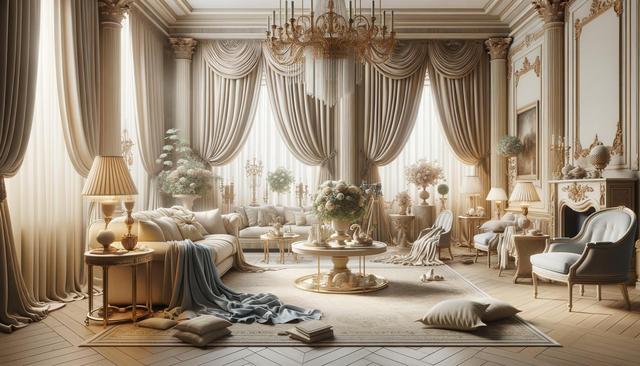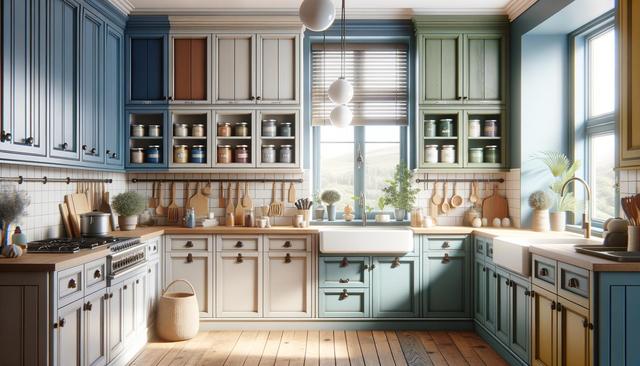Understanding the Difference Between Drapes and Curtains
Although the terms are often used interchangeably, drapes and curtains have distinct characteristics that set them apart. Curtains are typically made from lighter fabrics and are often used in casual settings. They are commonly unlined and provide an airy aesthetic, making them ideal for kitchens, bedrooms, or other spaces where natural light is welcome. Drapes, on the other hand, are usually made of heavier materials and are often lined, which makes them better at blocking out light and providing insulation. Because of their formal appearance and functionality, drapes are popular in living rooms, dining rooms, and bedrooms that require more privacy and light control.
Choosing between drapes and curtains largely depends on the purpose they will serve in your space. If you’re looking to create a cozy, dim environment, such as in a media room or master bedroom, drapes might be the more suitable option. For spaces that benefit from ample natural light and a breezy feel, curtains often work well. Understanding these differences allows you to make informed decisions that balance functionality and style in your home.
Choosing the Right Fabric and Style
The fabric you select for your window treatments plays a significant role in both aesthetics and performance. Lighter fabrics such as cotton, linen, or polyester blends offer a casual, breathable feel and are easy to maintain. Heavier fabrics like velvet, brocade, or lined silk add a sense of luxury and are better at insulating and darkening a room.
Here are some popular fabric choices and their benefits:
- Cotton: Versatile and easy to clean; suits most décor styles
- Linen: Offers a light, airy look; ideal for informal settings
- Velvet: Provides insulation and light-blocking; adds a rich texture
- Polyester: Durable and affordable; resistant to wrinkling and shrinking
Style is another critical factor. From pleated drapes to grommet-top curtains, the hanging style can influence how the fabric falls and interacts with the rest of your décor. Layering with sheers or using tiebacks can further enhance the visual appeal and functionality of your window treatments.
Measuring and Installing for the Perfect Fit
Proper measurement is essential for achieving a tailored and cohesive look with your drapes or curtains. Start by measuring the width of your window, including any trim. A common rule of thumb is to allow for 1.5 to 3 times the width of the window in fabric, depending on how full you want the curtains to appear. For the length, consider whether you want the curtains to just touch the floor, puddle slightly, or hover above the baseboard.
Mounting height is another key consideration. Hanging curtains higher than the window frame can create the illusion of taller ceilings and a more spacious room. Use a sturdy curtain rod that complements the fabric weight and style, and ensure it extends beyond the window frame to allow the panels to fully open when drawn back.
Installation tips include:
- Use a level to ensure straight alignment
- Choose appropriate wall anchors for heavier drapes
- Ensure brackets are spaced evenly and securely fastened
Taking the time to measure and install correctly pays off in both aesthetics and functionality, creating a polished and intentional look.
Functional Benefits of Drapes and Curtains
Beyond their decorative appeal, drapes and curtains offer numerous practical benefits. One of the most notable is light control. Sheer curtains diffuse light while maintaining privacy, while blackout drapes block nearly all external light. This makes them particularly useful in bedrooms or home offices where glare reduction is important.
Additional benefits include:
- Thermal insulation: Heavy drapes can help regulate indoor temperatures by reducing heat loss in winter and blocking heat in summer.
- Sound dampening: Thick fabrics can soften outdoor noise, contributing to a quieter and more peaceful environment.
- Privacy: Whether you’re in a busy urban area or simply value seclusion, the right window treatment adds an effective barrier against prying eyes.
Moreover, drapes and curtains can protect your furnishings from sun damage by filtering out harsh UV rays. This helps preserve the color and integrity of your furniture, flooring, and artwork over time.
Coordinating with Interior Design Themes
Integrating drapes or curtains into your existing interior design can elevate the overall look of a room. Matching or contrasting colors, textures, and patterns can add depth and interest to your space. For a minimalist design, opt for neutral tones and clean lines. If your room embraces a more eclectic or bohemian feel, consider bold prints or layered textures.
Here are a few tips for successful coordination:
- Select fabrics that complement your upholstery or wall color
- Use curtain rods and hardware that match other metal finishes in the room
- Layer with sheers or blinds for both style and function
Seasonal changes can also influence your choices. Light, breezy curtains are ideal for warm months, while heavier, insulating drapes can be introduced during colder seasons for both comfort and style. By thoughtfully coordinating your drapes and curtains, you create a cohesive and inviting atmosphere that reflects your personal taste.
Conclusion
Drapes and curtains are more than just window coverings—they are key design elements that impact both the look and functionality of a space. Whether you’re aiming to enhance privacy, control light, or elevate your interior décor, the right window treatment can make a significant difference. By understanding the distinctions, choosing appropriate fabrics, taking accurate measurements, and aligning with your design vision, you can ensure your drapes and curtains serve both practical and aesthetic purposes effectively. For homeowners and interior design enthusiasts alike, investing time in selecting well-suited window treatments pays off in comfort, style, and long-term satisfaction.


